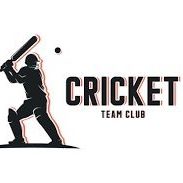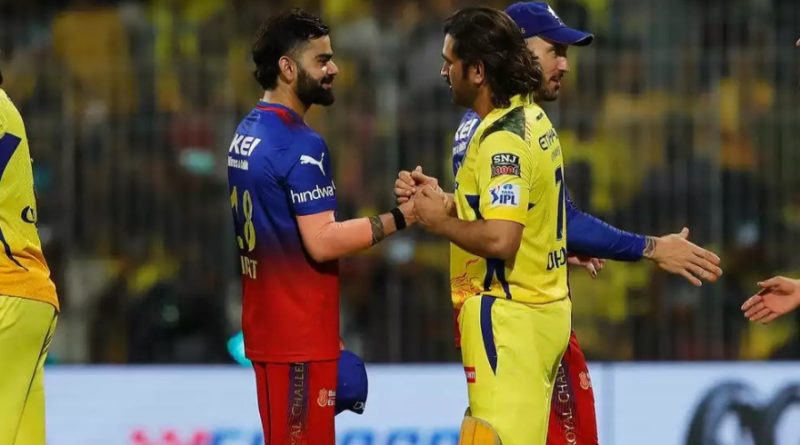Past two years starkly contrasted with what MS Dhoni saw
The past two years starkly contrasted with what MS Dhoni saw.
Can an event feel improbable and inevitable simultaneously?
The swirling, never-ending cacophony that has erupted throughout Indian cricket stadiums over the past two years starkly contrasted with what MS Dhoni saw as he came out to bat on April 14 at the Wankhede Stadium.
With just four balls remaining in CSK’s innings, there was little time to think through the circumstances. It was very logical and acceptable for him to encourage his partner.
He was batting on 66 off 38, to pass the strike. But there was a glimmer of how this would end as Dhoni tapped his thigh pad into position. He stuck his thumb through the helmet grill, and ducked to face Hardik Pandya. This league has been experiencing this for 16 years. The traditions are simply too deeply embedded, and the muscle memory is too powerful.
This summer, Mumbai has been torn, unable to accept the changes that are being forced upon it. However, during three days in mid-April, when it hosted Dhoni, Virat Kohli, and, of course, Rohit Sharma, it found itself collectively pulled to some pleasantly comfortable and familiar old habits. Even as rivals continued to hurl memes and insults at one another from a distance, the roars felt like both a celebration and an expression of real-time nostalgia toward the league’s original players.
The IPL has expanded more quickly than it has in the previous two years. Dhoni, Kohli, and Rohit, are essentially the final traces of an IPL era. It will soon become a thing of the past. Dhoni, who will turn 43 in less than two months, might have played his final competitive match. At least one more cycle remains for Rohit and Kohli, who are 37 and 35 years old, respectively, to try to keep up with the game’s evolutionary trend. In some ways, the match on Saturday between Dhoni’s CSK and Kohli’s RCB billed as “the last dance” will signal the conclusion of an era that, coincidentally, started in Bengaluru sixteen summers ago.
A few weeks before the start of the IPL season, there was a dance that became viral on the Indian internet. Shahrukh Khan, Aamir Khan, and Salman Khan were on stage together, shaking a leg at the opulent Ambani pre-wedding bash. For fans of a specific era, it was a significant time when Bollywood’s larger-than-life stars held India hostage and moviegoing was seen as a communal activity. Similar to watching Dhoni, Kohli, or Rohit play in the Indian Premier League, when team allegiances are neglected.
Much to this IPL season, when numerous T20 cricket traditions have come under fire, a few years ago there was a lot of discussion about Bollywood’s supposedly declining prominence. It was due to its traditional storytelling methods. Especially when the country’s non-Hindi film hubs in the south transformed and OTT platforms began to provide a sufficient amount of content suitable for binge-watching.
Additionally, younger, more approachable stars made their breakthrough, much as in the IPL. Nostalgia has emerged once more than a major lure. Similar to how millions of people came to the movies during Shahrukh’s three 2023 releases to see him return to the big screen five years later, still portraying the gorgeous, muscular hero at the age of 57. It resembled Dhoni at forty-two, leaving the field in the final over after smashing a few big boundaries.
Narrative similarities between Bollywood and cricket were inescapable from the outset of the IPL. Consider how the teams have begun to use social media to announce these three superstars at their pre-season camps. Every video begins with an image of a stylish vehicle pulling into a luxurious team hotel. One leg appears in the frame as the door opens. Then, dramatic music intensifies to a crescendo that heightens the suspense. Just before the hero occupies practically the entire screen and your collective mind. Like the first sequence of any of the countless Bollywood movies.
There was always a personality component to the IPL. The notion of “icon players” presented an opening for every franchise to take advantage of. All personality cults comprises the three fundamental colors of red, blue, and yellow as the competition progressed. Furthermore, the IPL has only been content to capitalize on Kohli, Rohit, and Dhoni’s fame. Matches involving these three have much higher broadcast ratings than games without any of them. With the help of their home cities, which have the financial wherewithal to match the hero worship, two of these franchises—RCB and MI—even charge the highest gate entry prices. For example, the cost of a ticket to see this final match between Kohli and Dhoni could make someone richer for the ‘I was there’ narrative alone by up to INR 79894.
The crowds that swarm stadiums with 7, 18, or 45 on the backs of their shirts are proof of the cross-generational appeal of Dhoni, Kohli, and Rohit. Schoolkids mingle with talkative grey-haired men and women, young mothers, and well-dressed corporates who frequently leave their offices to watch Dhoni bat four balls in the last over of an innings.
Additionally, none of the trio’s games are “away.” They’ve gone beyond concepts of loyalty between clubs and even of winning and losing for their teams. When Dhoni scored 37* off 16 earlier in the season, CSK fans celebrated by dancing their way out of the Vizag stadium. Even though his team had lost the chase by 20 runs. On the other side, the Mumbai Indians and the RCB’s campaign have the same theme of a persecution complex. While at the Wankhede Stadium, new captain Hardik Pandya was routinely and loudly jeered. They perceived it to be an opportunistic snatching of the captaincy from Kohli. The player received sympathy for continually supporting a team that seemingly unfailingly let him down by selecting dysfunctional bowling attacks.
This is all due as much to the trio’s IPL accomplishments. It is due to the cumulative goodwill that comes with representing and playing for India. Before the IPL debuted in April 2008, at least two of them—Rohit and Dhoni—played for India. While Kohli debuted for the national team just three months later. This is why, at least in terms of how cricketing legacies exist in India. This upcoming match feels like the end of an era.
That is not to argue that stars of that kind are no longer available in Indian cricket. There won’t ever be a shortage. This IPL season illustrates how the competition still provides the ideal stage. Almost like an over-the-top experience—for the emergence of an overnight sensation. Additionally, with players like Jasprit Bumrah, Rishabh Pant, and Ravindra Jadeja, there is already enough inherent star value. They should not overlook the generation that follows them, which includes Riyan Parag, Yashasvi Jaiswal, and Shubman Gill.
Will they, like Dhoni, Kohli, and Rohit, ultimately surpass conventional team allegiances and forge auras that propel them from success to superstardom? Whether they’ll permit them to is the more important question. The tournament may be already shifting from a select group of well-known people to a more democratic one. Nearly decentralized distribution of attention, which is not necessarily a negative thing. However, it can indicate that you won’t ever again think about pursuing a ticket that costs INR 79894 for four hours on a day when there is an 80% chance of rain.


Your website is both visually appealing and highly informative.